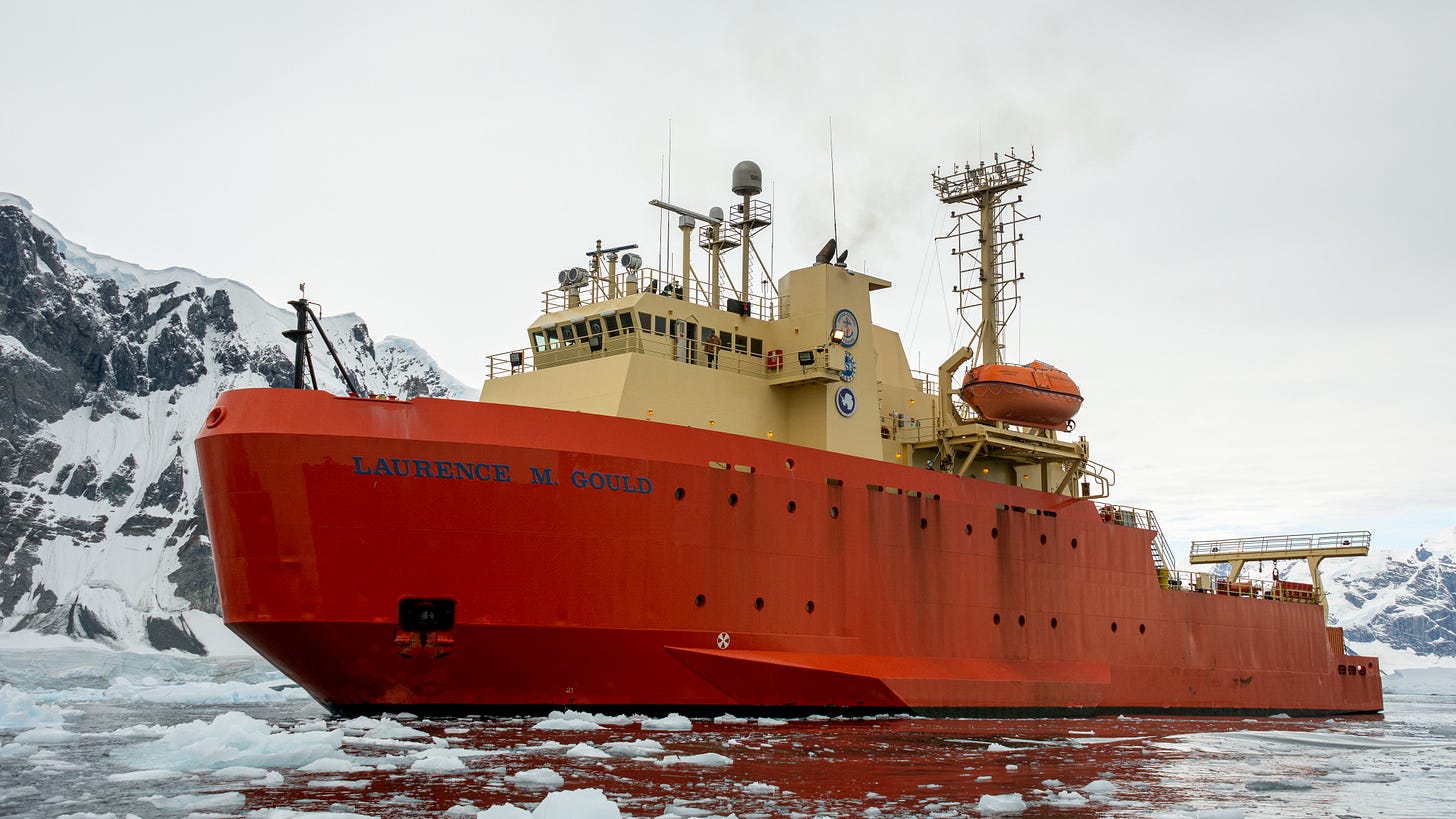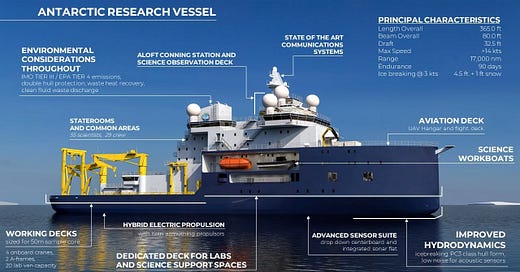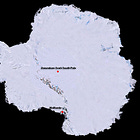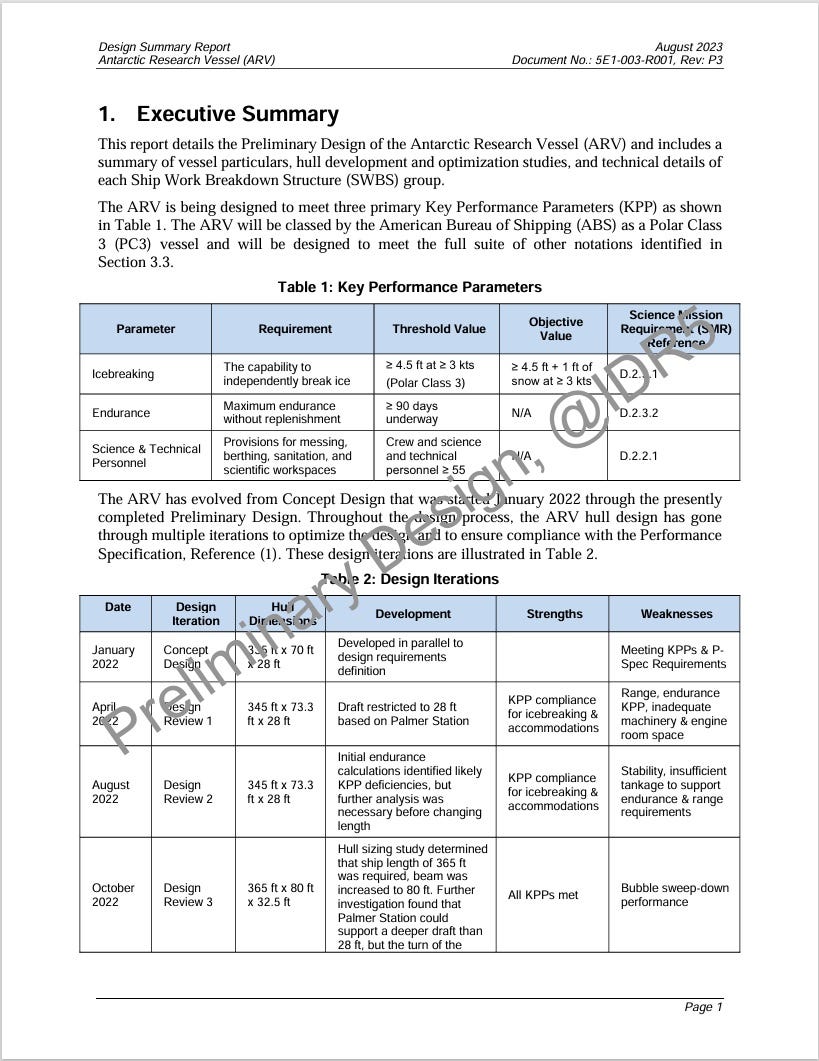The Other Billion Dollar Icebreaker Program
The National Science Foundation's plan to replace its aging ice-capable research vessels.
At the end of April, I wrote an article on the importance of maintaining U.S. presence in Antarctica. Put simply, under the Antarctic Treaty System presence equals influence. Chinese presence is growing, but for now the United States maintains the largest presence of any nation in Antarctica.
I covered McMurdo Station’s dependence on the U.S. Coast Guard’s aging icebreaker Polar Star for re-supply in my earlier post. Amundsen-Scott South Pole Station depends on supplies forwarded from McMurdo, so it is also dependent on Polar Star. You can read more about that here:
And you can find out more about the problems plaguing the U.S. Coast Guard’s Polar Security Cutter Program, as it struggles to design and build vessels to replace the Polar Star, here:
Palmer Station and At-Sea Research
Today, let’s talk about the two vessels that the U.S. Antarctic Program (USAP) relies on to support the other U.S. research outpost, Palmer Station. Palmer is located north of the Polar Circle, so its support vessels need significantly less ice capability than the Polar Star.
At present there are two USAP ships - ARSV Laurence M. Gould (LMG) and RVIB Nathaniel B. Palmer (NBP) - both of which are operated under charter agreements with Edison-Chouest Offshore (ECO) via the USAP's Antarctic contractor. Both ships are nearing end-of-contract and the NBP in particular is nearing the end of its design service life. Neither USAP ship is up-to-date regarding some regulatory matters, and neither can readily be refit into compliance. Then, too, there is the matter that the operating costs for the USAP ships are increasing (faster than overall inflation), but the USAP operates now and for the conceivable future in a more or less constant-dollar fiscal environment. (2019 National Science Foundation (NSF) Research Vessel Report produced by an ad-Hoc Subcommittee of its Office of Polar Programs Advisory Committee- the 2019 RV Report for short.)

Although the same report strongly recommended continuation of a two-ship support model, it recognized that this might not be financially sustainable. So, this announcement on April 29th likely came as no surprise (emphasis mine):
The U.S. National Science Foundation’s (NSF) Office of Polar Programs (OPP) has announced the non-renewal of the charter for the Antarctic Research and Supply Vessel (ARSV) Laurence M. Gould (LMG) following the conclusion of the 2023-24 Antarctic season. The LMG, a part of the U.S. Antarctic Program (USAP) since 1997, has played a key role in supporting marine research and logistics operations between NSF Palmer Station and South American ports.
The LMG charter, held with Edison-Chouest Offshore, will expire on July 16, 2024. The decision not to renew the charter aligns with NSF's commitment to balancing scientific priorities, evolving logistical needs, and budget constraints. Escalating costs and the availability of alternative commercial opportunities have led to this strategic shift in vessel support.
NSF OPP is actively evaluating alternatives to ensure continuity in supporting Antarctic research. These efforts are part of a broader NSF vessel recapitalization initiative for Antarctica, reflecting community input and strategic planning efforts outlined in the 2019 Report of the Ad Hoc Subcommittee on the U.S. Antarctic Program’s Research Vessel Procurement and the 2024 NASEM Future Directions for Southern Ocean and Antarctic Nearshore and Coastal Research study.
The LMG is the smaller of the two vessels and serves mainly to ferry personnel and bring supplies into Palmer Station, conducting limited research during these transits. The 2019 RV report suggests that in a one-ship model, the charter of non-USAP ships, whether commercial or from other nations’ polar programs, could complete the LMG’s supply missions at a lower cost. And the NSF needs to save money if it wants to buy the proposed follow on to the Nathaniel B. Palmer. The New Antarctic Research Vessel is not cheap.
Meet the Antarctic Research Vessel- Another Billion Dollar Icebreaker
Leidos (the holder of the Antarctic Support Contract), working with the design firm Gibbs and Cox, has published a preliminary design of this Antarctic Support Vessel (ASV) that includes its associated Key Performance Parameters. The three KPPs involve icebreaking capability (Polar Class 3)1, an endurance of at least 90 days, and a capability to embark at least 55 science and technical personnel. Not listed as KPPs are embarked helicopter capability and a moonpool; these were removed for cost and space considerations.
Not everyone is happy:
In Antarctica, German and South Korean icebreaking research ships regularly fly helicopters to reach remote glaciers. The U.S. National Science Foundation’s (NSF’s) 30-year-old RV Nathaniel B. Palmer can also carry helicopters. And the British Antarctic Survey’s new RRS Sir David Attenborough has not only a helideck and hangar, but also a “moonpool” port in its hull for deploying undersea instruments.
The planned design for the $1 billion U.S. Antarctic Research Vessel (ARV), a proposed icebreaker intended to replace the Palmer in the early 2030s, includes neither of those features, however. Some U.S. polar scientists are frustrated by the omissions.
“Why is the United States stepping backwards at a core level?” asks Ted Scambos, a glaciologist at the University of Colorado, Boulder. Scambos last year urged NSF and other science policy leaders to reconsider the ARV design in an open letter co-signed by more than two dozen Antarctic researchers. “Building a new icebreaker is a generational investment,” says Julia Wellner, a marine geologist at the University of Houston. “Limiting an entire generation’s access to the coastal area—where we know there’s some of the most important science we can do for understanding ice sheet mass balance—doesn’t make sense.”
Ship-based helicopter support is particularly important for Antarctic glacial research, said scientists at a workshop held last month by the National Academies of Sciences, Engineering, and Medicine (NASEM). The researchers want NSF to reconsider the ARV design before a preliminary review closes at the end of this year.
Hang on a minute- the NSF is planning on building a $1 billion+ PC3 Polar Research Vessel, and it doesn’t include a moonpool or capability to embark and fuel helicopters?
Apparently so. The article goes on to say that these were cut to keep the cost of the vessel reasonable, as the NSF has other ongoing projects, such as a $540 million modernization project at McMurdo Station, competing for limited researchers.
The 2024 NASEM Future Directions for Southern Ocean and Antarctic Nearshore and Coastal Research study by the National Academy of Sciences pushes back against the lack of embarked helicopter support. But for now, I’d like to take a closer look at Appendix B of that report, which considers the capabilities of partner nations polar research vessels. It does this to suggest partnerships with these nations to make up for capabilities that our new, $1 billion+ research vessel will lack. Since the number one KPP was a Polar Class of PC3 or greater, let’s compare all of the PC3 vessels listed in this Appendix with the NSF’s current capability (i.e. the NBP) and its planned capability (the ARV)2 (note that the ‘helos’ category refers to the number of helicopters that can be embarked. The latest ARV design has a helicopter landing spot, but no hangar/support facilities for helicopters)

Australia’s Nuyina exceeds all of the Antarctic Research Vessel’s KPPs, can embark 2 medium or 4 small helicopters, and has a moonpool. The Kronprins Haakon fails to meet the ARV’s endurance and accommodation KPPs, but has helicopters and a moonpool, and is about equal to the NBP in endurance and accommodation. If offered a new, PC3 version of the NBP today I’m sure many would take it. Especially because you could purchase four or five of them for the proposed cost of a single ARV3.
Questioning the Cost
Let’s take a quick look at the relative size and cost of these vessels:
This is where I lose the train. Sure, the Kronprins Haakon entered service six years ago, and inflation is real. If I use the least favorable exchange rate from 2018, that still puts the 2018 cost at $182 million USD. Will the ARV really cost more than five times that of an ally’s capable PC3 research vessel?
Let’s look at the Nuyina. This vessel has its critics- it is an attempt to do the work of a logistics support ship and a scientific research vessel in a single hull. But with its larger size and dual mission, surely it would be more expensive than the planned Antarctic Research Vessel?
No. Building Nuyina cost 528M AUD. The overall program cost, at 1.9B AUD, was for the vessel’s design, construction, and thirty-year operating life. That’s about $1.2 B USD- meaning that the ARV seems really overpriced. Perhaps that is because of the state-of-the art scientific equipment?
I don’t know much about the scientific equipment involved, but I can point to the 2017 National Academies of Science report that states it costs an estimated additional $10-20 Million USD to make an icebreaker “science-ready” and about $20-30 Million USD more to furnish and install the actual scientific equipment:
Going beyond merely making the vessel science-ready and furnishing it fully with science capability will require installation of the actual science-related equipment and outfitting spaces for science. Overboarding equipment (e.g., winches, A-frames, cranes, load-handling systems) and ship-supplied installed instrumentation and facilities (e.g., hull-mounted acoustic sensors, meteorological sensors, a science seawater system equipped with sensors, environmental chambers, freezers, science networks, and satellite communications antennas) would be included. Appropriate equipment and capabilities for newer research vessels in the University-National Oceanographic Laboratory System fleet are described in the November 2015 USCG ORD. Such outfitting would require an outlay at acquisition of $20 million to $30 million per ship. (page 65)
Based on that report, it should cost an additional $30-50 Million USD to outfit an icebreaking design for research. Assuming 2017 dollars, that would mean an additional $38-64 Million USD today.
Apparently, though, the ARV is being designed to manage operational costs:
The ARV design reflects OPP’s desire to manage its operational costs, says Tim McGovern, NSF’s ARV project manager. When OPP tried to propose a new ARV a decade ago, he says, “every imaginable area of research specialization chipped in on what they thought the ship should have.” The resulting ship would have ended up costing 50% more to operate than the Palmer and its sister ship, the Laurence M. Gould, combined. This time, McGovern notes, the ARV is being designed to keep operational costs low, despite being larger, more powerful, and better equipped than its predecessors.
Ship-based helicopter operations are expensive, McGovern says. It can cost $2 million to $3 million to operate a pair of helicopters from the Palmer, he says—costs that mean NSF can fund less research. Because of these high costs, McGovern says, the Palmer has deployed helicopters just three times in its entire history.
Let me see if I can follow: The required vessel range, as listed in the preliminary design, is 17,000 nm at 11 knots. According to the Norwegian Polar Institute, the Kronprins Haakon has a range of 15,000 nm at a cruising speed of 15 knots. Have we considered if we’d rather have the shorter range- with helicopters that can explore the coast and glaciers and a moonpool- for about 1/4 the price? ($182M USD in 2018 is approximately $227M USD today using the CPI for inflation, roughly 1/4 of the publicized $1B USD ARV). With a savings of about $700 Million, you could run helicopters for 233 years.
If the NSF really wants to save money, why isn’t it looking at existing designs, or working with designers of existing research vessels in order to take advantage of what they’ve already learned and can incorporate into a new design? This may require political will and a change in process, but it could save lots of money.
Questioning the Cost (Part II)
Based on the above comparisons, I had hoped that the $1 Billion USD cost that Marissa Grunes cited in her Science article was mistaken. I even delayed publishing this article until I could confirm the figure.
Confirm it I did. Sam.gov, the Official U.S. Government site for contracting, has an active solicitation for an Antarctic Research Vessel (ARV) Integrator. From there, you can download the Project Execution Plan (PEP). I call your attention to Appendix 6, which has a detailed cost breakdown. There are lots of cost estimates based on Monte Carlo Simulations and such, but the bottom-line figure- the Total Project ‘Should’ Cost- is listed as $1,196,599,300. So, there you go- it’s another $1 Billion+ USD icebreaker.
Maybe someday I’ll pick through the documents to try and figure out why this vessel will be so much more expensive than the European-built research icebreakers I mentioned above. But today is not that day.
Final Thoughts
I’m having difficulty understanding why it is so much more expensive to build ships in the United States than in Europe, and why we don’t seem to consider the marginal value of dollars spent- i.e. if it required performance parameter is really worth the trade off in price. I know that there are fine people working on this project, doing their best. I just can’t comprehend why it is so much more expensive. Is it the labor? Materials? Process? I purposely did not use the Xue Long 2’s reported construction cost, as comparing U.S. and Chinese labor and material cost didn’t seem to make sense. But U.S. costs should be at least comparable with Europe concerning labor and materials.
I’m working on an article that describes a recent, successful commercial icebreaker construction program similar in size to the Polar Security Cutter. I need to find a bit more information in order to make the comparison; I hope to have it out within the next week or two. Until then, you can expect a culture article this weekend (something really different this time) and more on icebreakers/shipbuilding next week. Thanks for reading, subscribing, and spreading the word. Like by pressing the heart if you want to see more posts like this. And don’t forget to share with a friend, or maybe even twelve.
All the Best,
PGR
Stats compiled from open-source figures.
Of course, this isn’t like car shopping- you can’t go to the dealer and buy four ships off the lot. But the comparison is stil useful.










Have you looked at all at the Canadian Polar Icebreaker replacement projects
Featherbedding and lack of competition.